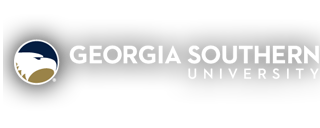Type of Presentation
Individual paper/presentation (20 minute presentation)
Target Audience
Higher Education
Location
Room 129
Proposal
In the past, Middle Georgia State College’s assessment of library instruction mainly consisted of post-instruction evaluations in which students answered questions about the class’s usefulness and gave comments. However, we wanted to be able to tie our library instruction sessions to learning outcomes based on ACRL Information Literacy Standards—not just student impressions of the class. For three years, the college had been conducting two library instruction sessions for each section of our new First Year Experience class, and we were using a standardized instruction outline and worksheet for each of those classes already. The FYE program, therefore, was the ideal place to try a pilot program of assessment based on consistent learning outcomes and student activities across all sessions. Based on ACRL standards, we identified three desired learning outcomes for the first FYE session and four for the second session. We then developed instruction outlines, activity worksheets, and scoring rubrics, and started using these in Fall of 2013. We have just completed our first full year of collecting this assessment data and will present what we have learned to date, and where we plan to go with this in future.
Presentation Description
When Middle Georgia State College decided to begin a pilot assessment program, tying our library instruction sessions to learning outcomes based on ACRL standards, our First Year Experience program seemed the perfect place to start. After identifying learning outcomes, we developed instruction outlines, activity worksheets, and scoring rubrics. We are just completing our first full year of collecting this assessment data and will present what we have learned to date, and where we plan to go with this in future.
Keywords
assessment, library instruction, ACRL standards, learning outcomes, worksheets, FYE, First Year Experience, academic libraries
Publication Type and Release Option
Presentation (Open Access)
Creative Commons License

This work is licensed under a Creative Commons Attribution-Share Alike 4.0 License.
Recommended Citation
Grant, Robin Johns, "The Proof is in the Worksheets: Assessing Information Literacy Outcomes from Library Instruction in an Evolved FYE Program" (2014). Georgia International Conference on Information Literacy. 32.
https://digitalcommons.georgiasouthern.edu/gaintlit/2014/2014/32
Outline of Instruction Sessions with corresponding ACRL Info Lit Standards
Session I Worksheet 2014.docx (17 kB)
Instruction Session I Worksheet sample
Rubric for worksheet I 2014.docx (17 kB)
Rubric used to assign scores for session I
Session II Worksheet 2014.doc (37 kB)
Instruction Session II Worksheet sample
Rubric for worksheet II 2014.docx (16 kB)
Rubric used to assign scores for session II
The Proof is in the Worksheets: Assessing Information Literacy Outcomes from Library Instruction in an Evolved FYE Program
Room 129
In the past, Middle Georgia State College’s assessment of library instruction mainly consisted of post-instruction evaluations in which students answered questions about the class’s usefulness and gave comments. However, we wanted to be able to tie our library instruction sessions to learning outcomes based on ACRL Information Literacy Standards—not just student impressions of the class. For three years, the college had been conducting two library instruction sessions for each section of our new First Year Experience class, and we were using a standardized instruction outline and worksheet for each of those classes already. The FYE program, therefore, was the ideal place to try a pilot program of assessment based on consistent learning outcomes and student activities across all sessions. Based on ACRL standards, we identified three desired learning outcomes for the first FYE session and four for the second session. We then developed instruction outlines, activity worksheets, and scoring rubrics, and started using these in Fall of 2013. We have just completed our first full year of collecting this assessment data and will present what we have learned to date, and where we plan to go with this in future.

